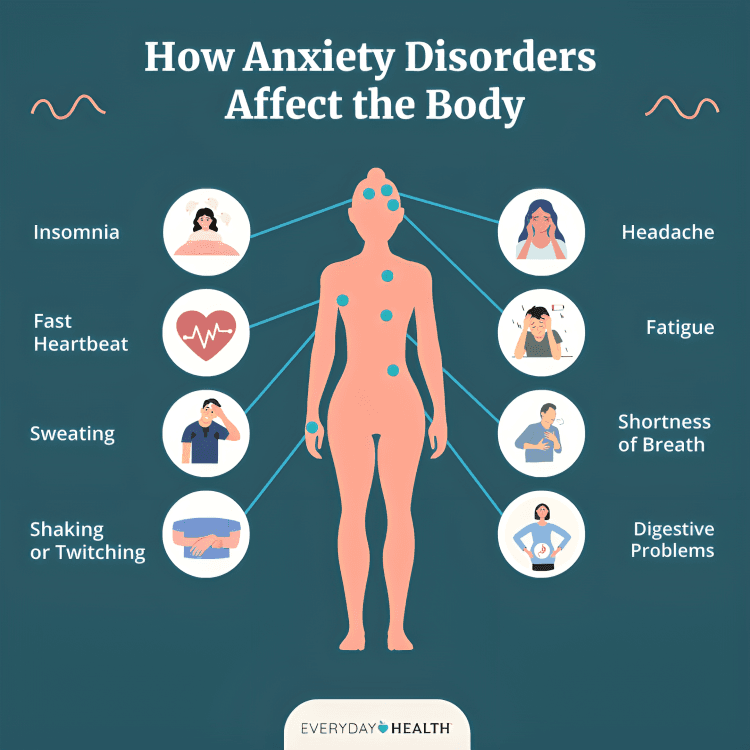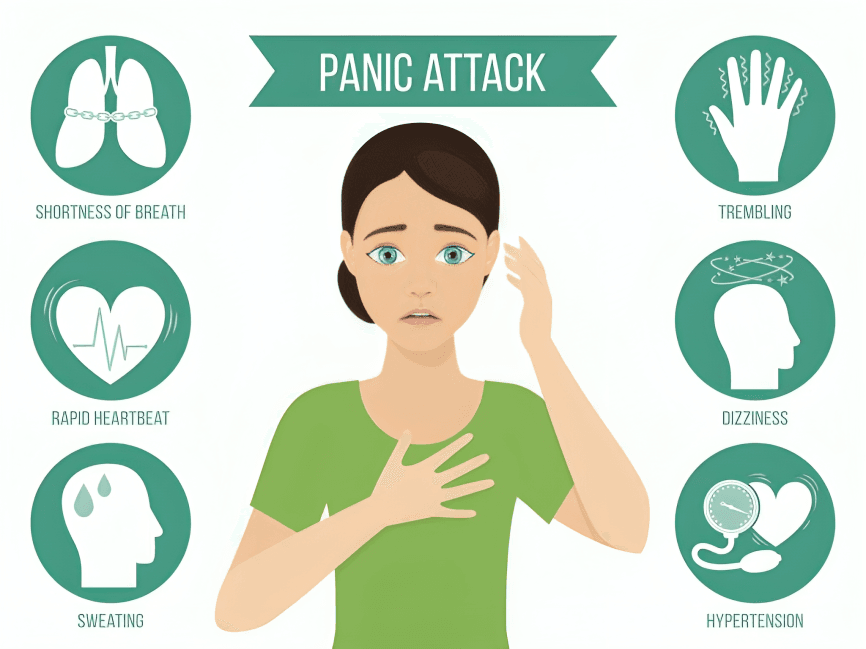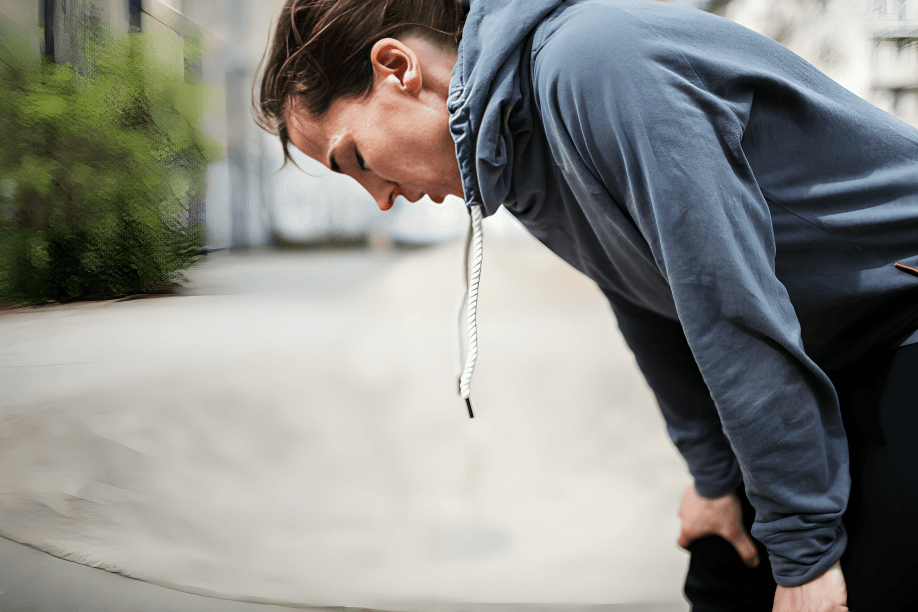
“
Understanding the signs and symptoms of anxiety disorders is essential for recognizing how these mental health conditions manifest in everyday life. From persistent worry to physical discomfort, the signs and symptoms of anxiety disorders affect individuals in various ways. Identifying them early can help in seeking timely support and treatment. By becoming aware of the signs and symptoms of anxiety disorders, people can begin their journey toward better emotional health and well-being.1
1
”
Søren Kierkegaard, in The Concept of Anxiety (1844), called anxiety the "dizziness of freedom," reflecting the deep existential tension between choice and responsibility—highlighting anxiety's roots in human experience. 1
Persistent and excessive worry about various aspects of daily life, such as work, health, or social interactions, is a hallmark of generalized anxiety disorder (GAD). This chronic worry often interferes with daily activities and is difficult to control.2
Individuals with anxiety disorders may experience restlessness or a constant feeling of being "on edge," leading to difficulty concentrating and irritability. This heightened state of arousal can be mentally and physically exhausting.3

Physical symptoms such as increased heart rate, rapid breathing, sweating, and trembling are common in anxiety disorders, stemming from the body's fight-or-flight response to perceived threats.
Sleep disturbances, including trouble falling or staying asleep, are prevalent among those with anxiety disorders. Racing thoughts and heightened arousal at bedtime can lead to chronic insomnia. 4
Muscle tension, leading to aches and discomfort, often accompanies anxiety, resulting from prolonged physical stress responses and constant vigilance. 5
Gastrointestinal issues like nausea, stomachaches, or diarrhea can occur, as anxiety affects the digestive system through stress-induced hormonal changes. 6
Dr. Carl Jung, a pioneer of analytical psychology, viewed anxiety as a vital signal from the unconscious, urging personal growth and transformation rather than something to be merely suppressed or feared.7
Irritability is a common emotional symptom, where individuals may have a lower threshold for frustration due to constant underlying tension and worry. 8
Avoidant behaviors, such as steering clear of certain places or situations, develop as coping mechanisms to prevent anxiety triggers, potentially leading to social isolation. 9

Panic attacks involve sudden, intense fear with symptoms like chest pain, dizziness, and a sense of impending doom, often peaking within minutes and leaving individuals feeling exhausted.
Individuals may experience depersonalization or derealization, feeling detached from themselves or their surroundings during heightened anxiety episodes, which can be disorienting and distressing. 10
Physical sensations like tingling or numbness in the extremities may occur, linked to hyperventilation during anxiety episodes, and can mimic more serious medical conditions.11
Sweating, even in cool environments, is a notable physical sign often linked to anxiety. The body’s sympathetic nervous system overreacts to perceived stress, activating sweat glands through the fight-or-flight mechanism, even when temperatures are low.12
Chronic fatigue or persistent tiredness is commonly reported among individuals with anxiety. Constant mental and physical hypervigilance keeps the nervous system tense, draining energy and disrupting deep, restorative sleep over time. 13

Shortness of breath or suffocation is a classic symptom during anxiety or panic attacks. As the body enters a hyper-aroused state, shallow breathing or hyperventilation lowers carbon dioxide, creating tightness in the chest and breathlessness.
Dry mouth, although less often discussed, is an uncomfortable symptom of anxiety. During high stress, the body reduces saliva production, redirecting resources to essential systems, leading to trouble speaking, swallowing, or staying orally comfortable.14
Individuals may experience hot flashes or chills, as anxiety affects body temperature regulation through vasoconstriction and hormonal changes, leading to sudden sensations of heat or cold.15
Social anxiety disorder involves intense fear of social situations, leading to avoidance and physical symptoms like blushing or trembling, impacting relationships and opportunities. 16
In modern psychiatry, anxiety is recognized as a highly treatable condition, with therapies like CBT, medications, and mindfulness showing strong evidence-based results in reducing both psychological and physiological symptoms significantly. 17


